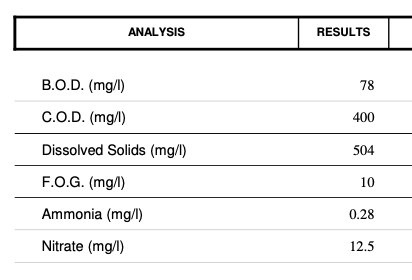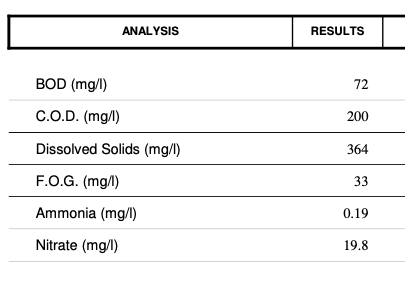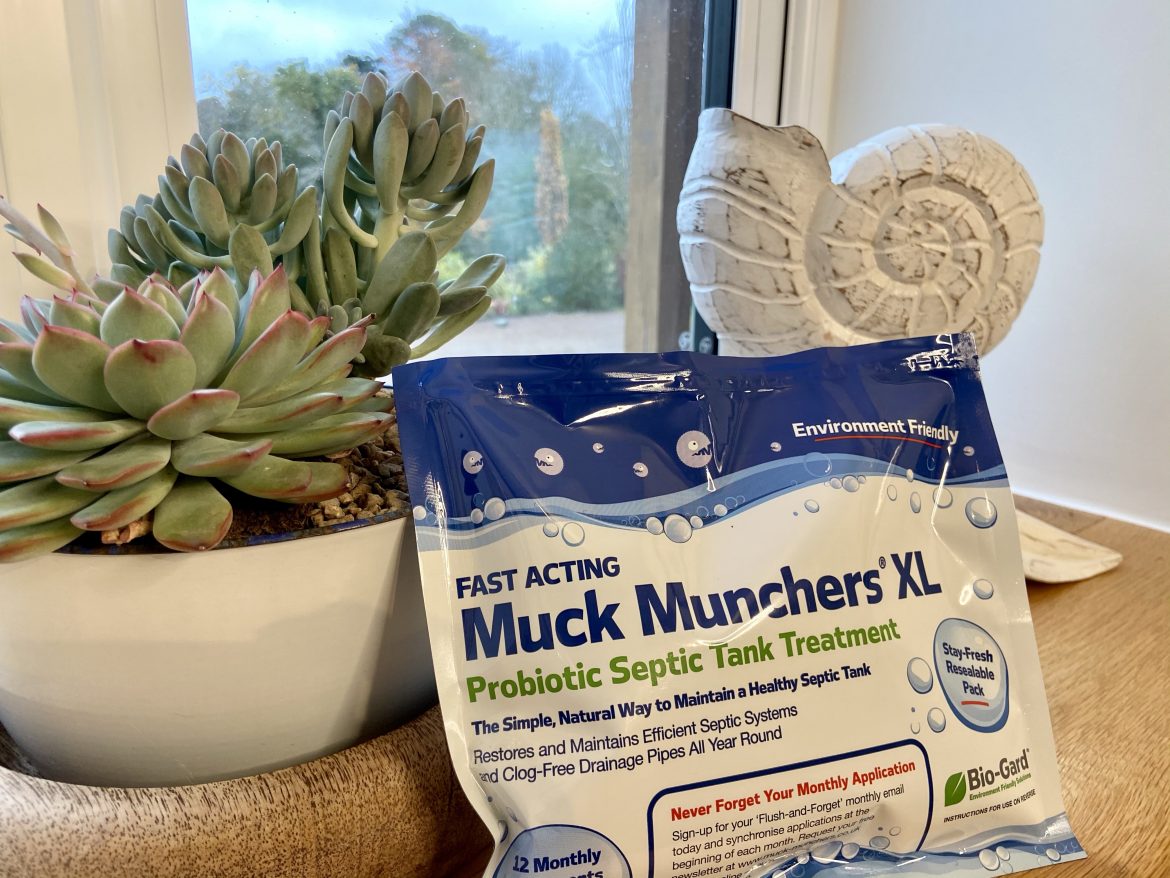We have been using Muck Munchers for three months to restore the health of our home sewage treatment plant. Our second set of lab results have returned so if you want know if the good bacteria in the little sachets is working please watch our Muck Munchers review.
We didn’t want to get too technical in the video, but if you’re interested in our lab results we try to explain them below.
Let’s start by looking at the first lab test from August, 2020. This water sample was taken before we flushed any Muck Munchers sachets down the toilet.

Now that we have a baseline, let’s take a look at the results from our second lab test after using Muck Munchers for three months.

So let’s start at the top and work our way across the results. BOD is the amount of oxygen required to biologically oxidise (digest) the biomass in the sewage tank in five days. This is slightly lower at 72 mg/litre from 78mg/litre three months ago.
This indicates that we are careful about what goes into the tank and the wastewater system is easily coping with the load. As a comparison, in Europe, the norm is 25-40mg/litre BOD per person per day which would normally equate to 100mg/litre+ BOD per day. We have four people sharing the tank, which shows that our tank is operating more effectively than the norm.
COD (chemical oxygen demand) has reduced from 400 to 200mg /litre confirming that biological digestion has improved significantly. The ratio of BOD to COD, at 1:3 in our case, indicates a high level of effective digestion. A healthy tank normally has a ratio of 1:4-1:10. This indicates that our tank is healthy.
The dissolved solids in the tank have also reduced from 504 to 364mg/litre, which confirms that the microbes are working effectively and are digesting organic waste.
This was an interesting one. The increase in FOG (fats, oils and grease) from 10 to 33, means that as the microbes are producing lipase, emulsifying the FOG on the surface and splitting the molecules into fatty acids. The increased number is a good thing in this case because the FOG is now in a form where the microbes are able to digest the fatty acids, which previously floated on the surface (and not in the aerobic, fluid liquid middle part of the tank chamber).
The results also show a reduction in ammonia of 33%, indicating that this toxic chemical has been converted into nitrates.
The higher nitrate level of 19.8mg /litre, up from 12.5mg/litre in the initial sample, is further confirmation of the conversion of ammonia to valuable plant nutrients.
Overall, looking a the numbers, we currently have a healthy home sewage tank, which should continue to improve over time with continued monthly Muck Munchers treatments.
With more effective digestion in the primary chamber of the tank, the demands on digestion in the second chamber are lower, which will further reduce any effluent discharging to the soakaway.
Apart from reducing the need for pump-outs, the lower discharges will decrease potential soakaway problems and result in cleaner, purer water being released into the surrounding soil and water courses.
Next year, we’re going evaluate the quality of our soak away water. That should be super interesting.
